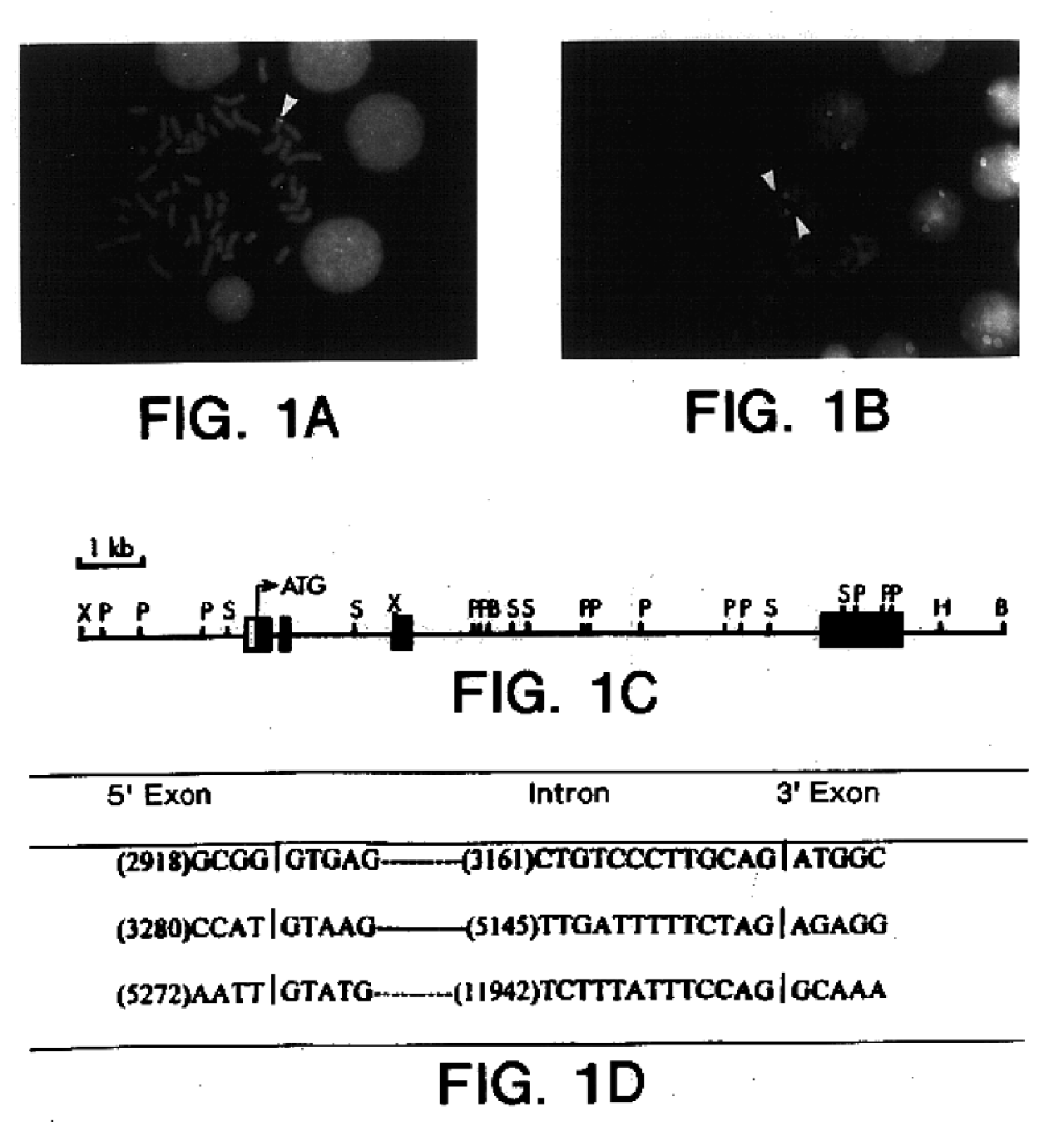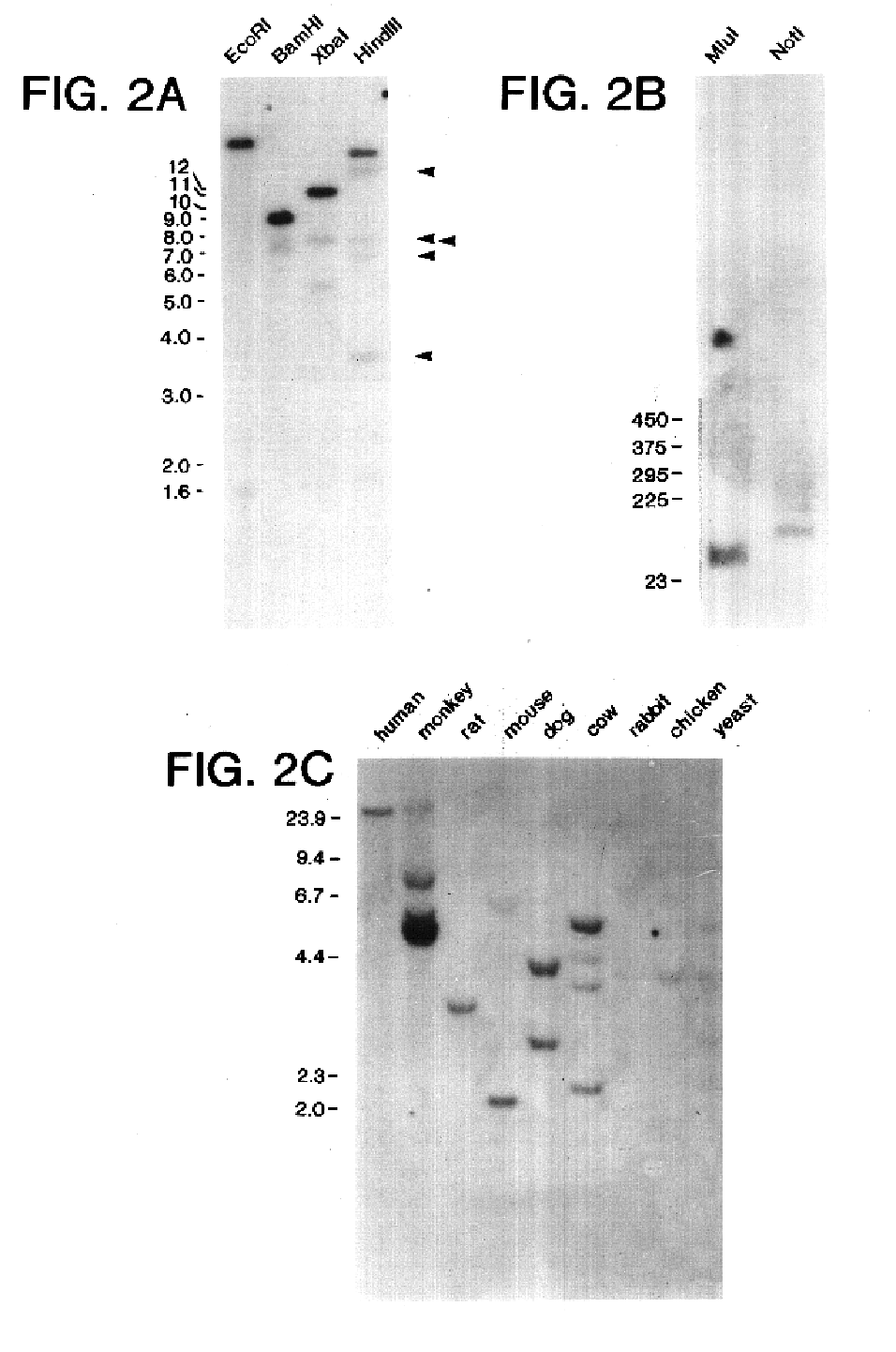Survivin, a protein that inhibits cellular apoptosis and its modulation
a cell apoptosis and survival protein technology, applied in the field of survival protein, can solve the problems of mass apoptosis and decrease cell growth, and achieve the effect of reducing the severity of pathological processes
- Summary
- Abstract
- Description
- Claims
- Application Information
AI Technical Summary
Benefits of technology
Problems solved by technology
Method used
Image
Examples
example 1
Experimental Procedures and Cloning
[0187]Cells and cell culture. The following cell lines were obtained from American Type Culture Collection (ATCC, Rockville, Md.), erythroleukemia HEL, B-lymphoma Daudi and JY, monocytic THP-1, T leukemia Jurkat, epithelial carcinoma HeLa, promyelocytic HL-60, and non-transformed human lung fibroblast Lu18. The T leukemia cell line MOLT13 was characterized previously (Altieri, D. C., FASEB J (1995) 9:860-865). Cells were maintained in culture in complete medium RPMI 1640 or DMEM (HeLa, Lu18) (BioWittaker, Walkersville, Md.), supplemented with 10% heat-inactivated fetal bovine serum (FBS, Whittaker), 2 mM L-glutamine, and 10 mM HEPES. Human umbilical vein endothelial cells (HUVEC) were isolated by collagenase treatment and maintained in culture in DMEM medium supplemented with 20% FBS, 2 mM L-glutamine and endothelial cell growth factor (Biomedical Technologies, Stoughton, Mass.).
[0188]Peripheral blood mononuclear cells (PBMC) were isolated from hep...
example 2
Production of Anti-Survivin Antibodies
[0198]A Survivin sequence-specific antibody, called JC700, was produced and characterized as follows. A seventeenmer peptide corresponding to the Survivin sequence A3PTLPPAWQPFLKDHRI19 SEQ ID NO: 3, was synthesized and characterized by mass spectrometry. One hundred mg of the Survivin peptide were coupled in a 1:1 ratio to Keyhole Limpet Hemocyanin and injected s. c. into a rabbit in complete Freund's adjuvant. After a 4-week interval., animals were boosted with s. c. injection of 100 mg of peptide in incomplete Freund's adjuvant and sequentially boosted and bled at alternate weeks.
[0199]Purification of the anti-Survivin antibody was carried out by affinity chromatography on a peptide-Sepharose matrix (5 mg / ml of peptide) with elution of the specific IgG fraction in 1 mM glycine, pH 2.5. Specificity of the affinity-purified anti-Survivin antibody, designated JC700, was determined by ELISA against the immobilized Survivin peptide or a control EPR...
example 3
Production of a Monoclonal Antibody against a Survivin Fusion Protein
[0200]The Survivin cDNA was expressed as a GST-fusion protein in E. Coli BL21 strain and purified to homogeneity with removal of the GST frame. The purified protein was used to inject mice and generate monoclonal antibodies using standard hybridoma technology. Three independent mAbs were isolated, cloned twice by limiting dilution and further characterized. One of the new anti-Survivin mAbs, designated 8E2, recognized the immobilized, purified recombinant Survivin by ELISA and bound to Survivin in immunoblots, as shown in FIG. 11.
PUM
| Property | Measurement | Unit |
|---|---|---|
| pH | aaaaa | aaaaa |
| pH | aaaaa | aaaaa |
| temperature | aaaaa | aaaaa |
Abstract
Description
Claims
Application Information
 Login to View More
Login to View More - R&D
- Intellectual Property
- Life Sciences
- Materials
- Tech Scout
- Unparalleled Data Quality
- Higher Quality Content
- 60% Fewer Hallucinations
Browse by: Latest US Patents, China's latest patents, Technical Efficacy Thesaurus, Application Domain, Technology Topic, Popular Technical Reports.
© 2025 PatSnap. All rights reserved.Legal|Privacy policy|Modern Slavery Act Transparency Statement|Sitemap|About US| Contact US: help@patsnap.com



